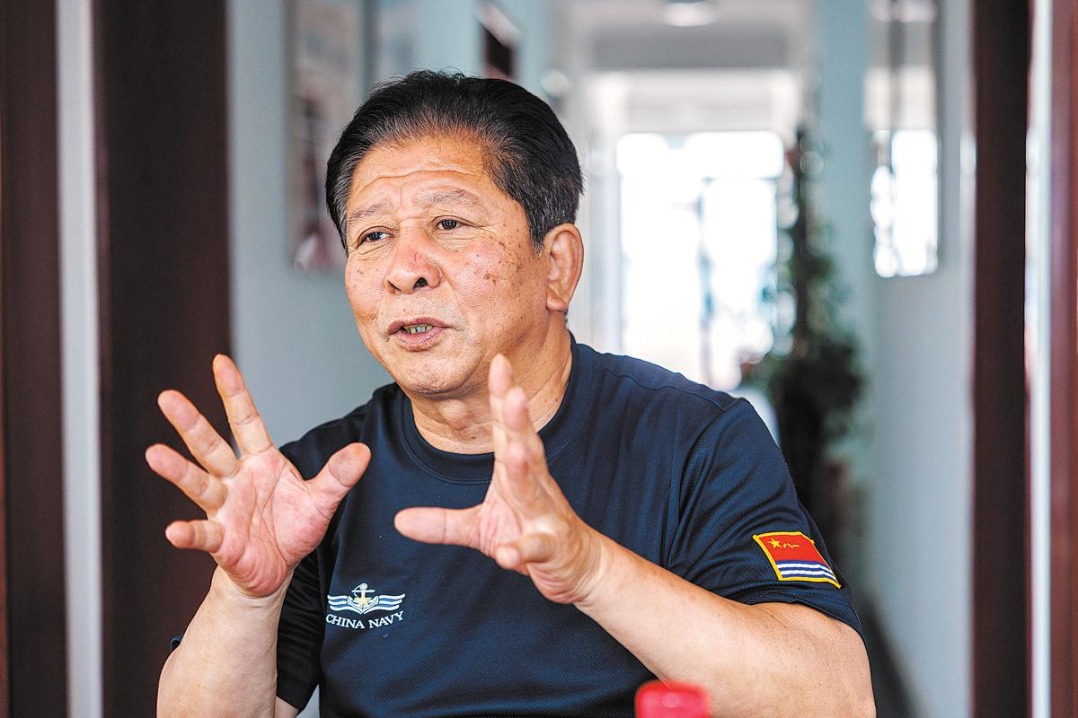Fishing manuals record China's early footprints in South China Sea

HAIKOU -- In China's southernmost island province of Hainan, local fishing families still keep their cherished heirlooms: worn sea route manuals known as Geng Lu Bu.
For centuries, far before the invention of GPS and modern mapping technologies, local fishing families relied on these handwritten books for directions and navigation guidance in the South China Sea.
The Chinese characters "Geng Lu Bu" mean "seaway manuals." "Geng" in Chinese is a unit of length equal to 10 nautical miles, while "Lu" means "routes" and "Bu" translates to "books" or "manuals." Some fishing families still own their unique Geng Lu Bu, yellowed with age, despite having long since switched to modern fishing methods.
In Tanmen township, a famous fishing port in Hainan's Qionghai city, stands a Geng Lu Bu museum. The museum offers an insightful glimpse into the local history of discovering and sailing to the islands in the South China Sea.
Numerous Geng Lu Bu are exhibited in the museum, along with compasses, fishing spears and other fishing tools.
Wang Zhenzhong, founder of the museum and owner of a local handicraft factory, was born to a fishing family in 1977. Both his grandfather and father were skilled fishing boat captains, and he has also sailed to Nansha Qundao.
On a wrinkled, broken page of his family manual, his ancestors wrote a note: "Da Tan to Chuan Yan Wei goes in the direction of Qian Xun for 15 Gengs."
Da Tan is a deep pool outside the Tanmen port, and Chuan Yan Wei is now known as Xishazhou, an island of Xisha Qundao. Qian Xun is a direction marked on the ancient Chinese compass, and 15 Gengs is about 150 nautical miles.
The manual covers sea routes, weather conditions, wind directions and ocean currents for different times of the year. For example, it warns against setting sail on certain days, including the third day of the third lunar month and the 19th day of the sixth lunar month.
Wang remembers that in the late 1980s, his father set out to sea on one of these dates only to find the ocean was truly treacherous.
"He barely made it back to shore," Wang said.
These manuals were exclusive to fishing boat captains, and were edited and rewritten every generation, according to Wang. With a Geng Lu Bu, a compass and an incense burner, fishermen could set sail across the South China Sea.
At the bow of each fishing boat, a stick of incense would be lit inside a wind-protected burner. The incense would take about two hours to burn out, allowing seafarers to track the time.
They also had a unique method to measure sailing speeds: they would throw a jar attached to a rope into the water, and the captain would hold on to the rope to gauge the speed by feeling the force exerted on it.
Wang learned the art of fishing in coral reefs from his father and other seasoned professionals. Wearing masks and breathing tubes, they dive 20 to 30 meters below the surface of the water. Experienced fishing divers can hold their breath for up to five minutes. With fishing spears or just their bare hands, they catch sea cucumbers, lobsters and abalone hiding in the reef.
Valuable fish like groupers cannot be speared, as any injury reduces their market value. Divers therefore use a natural anesthetic extracted from the stems and leaves of a plant to stun the fish, which then float to the surface and are collected by people on the boats above.
"In Tanmen, unless you're very timid or in poor health, everyone heads out to sea," said Fu Minglin, a fisherman-turned-B&B-owner in his forties.
Fu has more experience in sailing and fishing than Wang, having regularly sailed to Meiji Jiao and Zhubi Jiao, two major reefs of China's Nansha Qundao. He has also sailed to Huangyan Dao and Zengmu Ansha, China's southernmost territory.
Fu's uncle, a skilled captain who could navigate the seas using only his Geng Lu Bu and a compass, taught him a great deal, including how to observe the color of the clouds to locate islands and reefs. Shallow and deep waters reflect light on the clouds differently, creating subtle color variations that reveal what lies below.
Long ago, fishing journeys usually lasted several months, depending on the monsoons. Fu said that according to the Geng Lu Bu, fishing boats would ride the northeast wind to the south during the 12th month of the lunar calendar each year, and they would return during the fourth month of the lunar calendar the following year.
During their voyages, fishing crews would either remain aboard their boats or settle temporarily on islands, leaving behind traces of development and habitation that are still preserved today.
"The South China Sea is where our great-grandparents journeyed, so we journey there too," Fu said.
In recent years, Geng Lu Bu have been increasingly recognized as important historical documents. In 2008, Geng Lu Bu were included in China's national intangible cultural heritage. Later that year, Wang's father, Wang Shubao, was honored as an official inheritor of this heritage.
For Wang, the manuals document how his ancestors and other fishermen and women mapped the routes across the vast, unmarked South China Sea, where they discovered, named, stationed at and developed many islands and reefs.
Yan Genqi, a professor at Hainan University and a Geng Lu Bu expert, says the paper-based manuals were created no later than the Ming Dynasty (1368-1644), while orally relayed sailing directions had already begun to take shape in the Hainan fishing community as early as the Song Dynasty (960-1279).
Since 1974, researchers have discovered 52 Geng Lu Bu, in which more than 100 islands are named in the Hainan dialect, according to Yan. On some of the islands mentioned in these Geng Lu Bu, people have found wells, houses and temples built by Hainan fishermen.
"The systematic and regular use of monsoons for continuous navigation and fishing activities in the Xisha Qundao, Zhongsha Qundao and Nansha Qundao areas over hundreds of years is unparalleled by any other country," Yan noted.
Geng Lu Bu is among the historical evidence that the Chinese were the first to discover, name, develop and administer the islands of the South China Sea, Yan said.
- Iconic Belgian music festival to make China debut
- Taiwan youth urged for more participation
- China issues first national heat-health risk warning
- Experimental satellite launched from Xichang center
- National health body to crack down on malpractices in medical aesthetics industry
- Scientists create the most detailed 3D map of a mouse brain





































